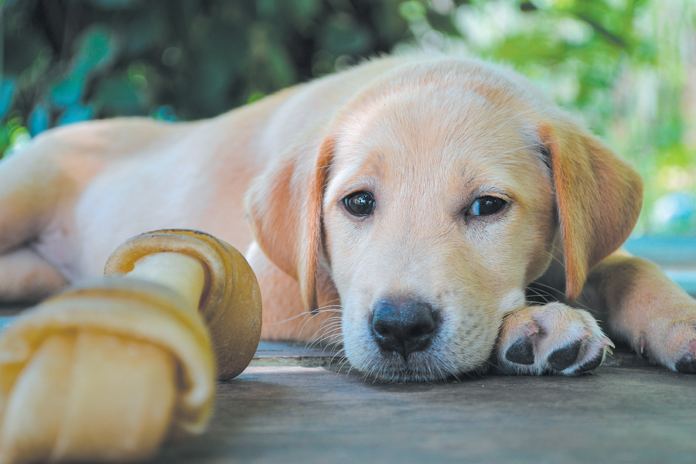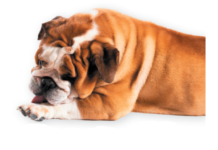Even though many people give their dogs rawhide, it can prove a significant safety hazard. If a pet lazily tugs at the rawhide little by little, there’s no danger. But if she is an aggressive chewer who swallows chunks with gusto, they can become stuck somewhere between her throat and the other end of her gastrointestinal tract. That can result in discomfort or, in more severe cases, an obstruction that requires surgery. Even small pieces can be a problem. They can lead to choking or blockages in the esophagus, stomach, or small intestine that require a visit to the veterinarian and possible surgery.
But even if your dog pulls at rawhide casually rather than with a sense of urgency, there are other potential health effects.
Calories, harmful bacteria
Because rawhide doesn’t quite look like food, a lot of people assume it doesn’t contain calories — or that if it does, the chewing will burn them off. Not true.
Made from the skin of animals, usually cattle, rawhide is mostly protein and packs a caloric punch. A single rawhide treat that’s approximately 2 inches by 6 inches and just an eighth of an inch thick generally contains between 50 and 100 calories. Rawhide snacks that are rolled up or made into other shapes have calorie counts that are much, much higher. In other words, chewing on rawhide is not like chewing on sugarless gum. It can impact your dog’s weight.
Another problem is that because rawhide is, well, raw, it may be contaminated with bacteria such as salmonella. The bacteria pose a risk of infection and illness for both dogs and their owners. Always wash your hands after handling it so you don’t spread any potential pathogens throughout your household.





